#japanese prints
Text

Japanese, After Ogata Korin
Kingfisher and a Whirlpool
Not dated (ca. 1930s)
#ogata korin#kingfisher#birds#wild birds#bird art#japanese prints#japanese art#japanese artist#asian art#wildlife#wildlife art#vintage animals#art history#aesthetictumblr#tumblraesthetic#tumblrpic#tumblrpictures#tumblr art#aesthetic#beauty
38 notes
·
View notes
Text
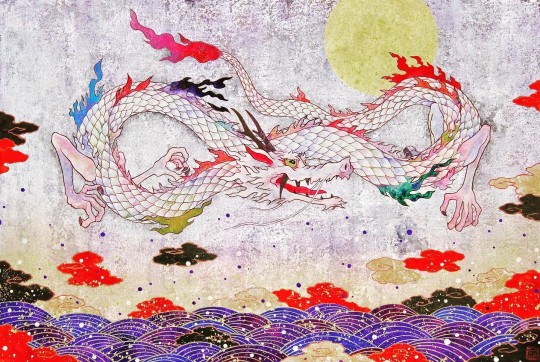
Koki Tsujimoto — Auspicious White Dragon (mineral pigments and japanese paper mounted on wood panel, 2020)
1K notes
·
View notes
Photo


Yoshida Toshi
Mendocino, Sunrise
with reverse
#yoshida tôshi#toshi yoshida#yoshida toshi#japanese art#woodblock print#ukiyoe#japan#woodcut#japanese prints#printmaking
9K notes
·
View notes
Text
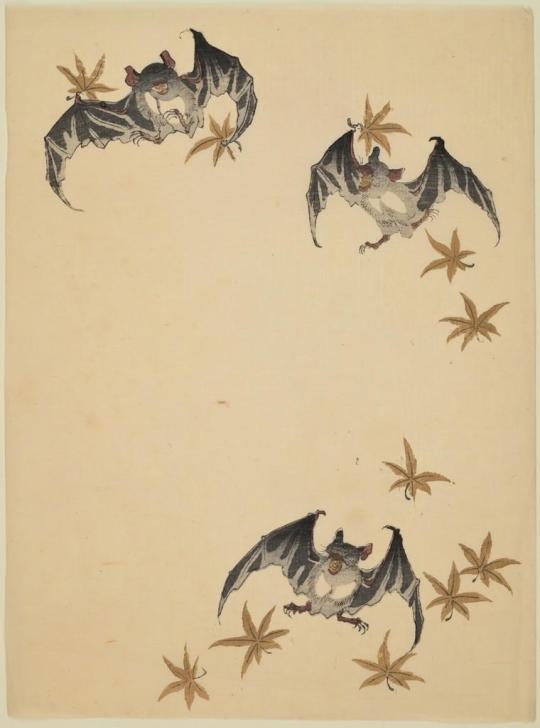
Bats and sycamore leaves*, a woodblock print by an unidentified Japanese artist ca. 1900. From the Taubman Museum of Art collection on JSTOR, featuring 1,701 freely accessible images of artworks, no login needed!
*What kind of leaves did you think they were, huh?
5K notes
·
View notes
Text

Famous Heroes of the Kabuki Stage Played by Frogs, by Utagawa Kuniyoshi, 19th century
#ukiyoe#japanese art#japanese prints#woodblock printing#japanese woodblock#ukiyo-e#woodblock print#woodblock art
1K notes
·
View notes
Text
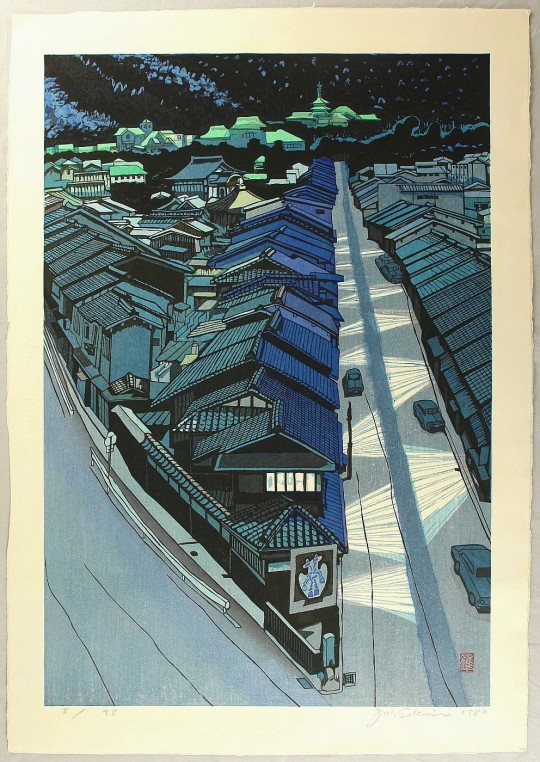
"Night in Kyoto" by Sekino Jun'ichirō (関野凖一郎), 1980
#japanese art#japanese print#関野凖一郎#sekino junichiro#japanese prints#arte japonés#impresiones japonesas
434 notes
·
View notes
Text

The Fukujuso Plant from Ehagaki sekai / artist unknown (19090
158 notes
·
View notes
Text

Japan's third empress regnant, Empress Jitō (645-703) was a powerful and effective ruler. Shrewd, bold and clever, she walked in the footsteps of empresses Suiko and Saimei and prevailed against all odds.
A troubled youth
Jitō was the daughter of Prince Naka no Ōe, the son of empress regnant Saimei. The year she was born, her father killed a minister in front of his mother, leading to her abdication.
Jitō’s maternal grandfather committed suicide three years later, having been wrongly accused of plotting against Prince Naka no Ōe. Jitō’s mother, Ochi, died of grief. Jitō was thus placed in her grandmother's care and raised by the former empress.
At age 12, she was married to her paternal uncle, Prince Ōama, who was 27. Jitō was a reserved person with a brilliant intelligence and much liked by the court. She was curious, open-minded and studied Chinese literature. The death of her grandmother in 661 pained her greatly. In 662, Jitō gave birth to her only child: prince Kusakabe. Her father then ascended took the throne as Emperor Tenji in 667.
Succession struggle
The question of Emperor Tenji’s succession soon arose. The sovereign favored Jitō’s half-brother, Prince Ōtomo, but Prince Ōama had his own ambitions. He and Jitō left the court, waiting for an opportunity to strike.
Ōtomo indeed succeeded Tenji, but Ōama revolted against him soon after with Jitō's support. When they arrived at Ise province, she dressed in male clothes and personally addressed the troops. She also worked on tactical plans. As Ōama left to leave an offensive in Ōmi province, Jitō took command of the troops stationed at Ise. She had indeed volunteered to defend the shrine dedicated to the sun Goddess, Amaterasu.
Their joint efforts led to their success. Ōama ascended the throne in 673 as emperor Tenmu, with Jitō becoming his co-ruler.
The radiant empress
Jitō was very influential in court matters. This was reflected in the choice of Tenmu's heir. He could have chosen his son by another woman, Prince Ōtsu, as his heir, but chose Jitō’s son, Prince Kusakabe, instead.
As Tenmu died in 686, Jitō took the matter in hand. She declared Ōtsu guilty of treason and forced him to commit suicide. She then organized grandiose funerals for her husband and wrote poems expressing her grief.
Oh, the autumn foliage
Of the hill of Kamioka!
My good Lord and Sovereign
Would see it in the evening
And ask of it in the morning.
On that very hill from afar
I gaze, wondering
If he sees it to-day,
Or asks of it to-morrow.
Sadness I feel at eve,
And heart-rending grief at morn—
The sleeves of my coarse-cloth robe
Are never for a moment dry.
Her son died in 689. Since her grandson was too young to rule, Jitō became empress regnant.
She reformed the country, establishing a strong central power and surrounded herself with capable ministers. In 689, she enacted a mandatory code for all local governors. In 690, she launched a population census.
She reformed the army, improving the recruitment conditions and the troops' training. A protector of the arts, she also actively participated in the propagation of Buddhism. Poetry became more refined during her reign. One of her poems was later included in the popular Hyakunin Isshu anthology:
The spring has passed
And the summer come again
For the silk-white robes
So they say, are spread to dry
On Mount Kaguyama
Jitō made her predecessors' objective of replacing the tribal system with a strong central power a reality. Her rule was synonymous with a degree of stability that neither her father nor husband were able to reach. She can be regarded as one of the true founders of Japan’s imperial monarchy. The empress was also fond of travels. In 692, she undertook a trip symbolic trip to Ise province, strengthening her authority and gaining the support of the local people.
The empress indeed took advantage of the Shinto rituals and the image of the sun Goddess to reinforce her legitimacy and used the links between the deity and the imperial family. Such was her prestige that Kakinomoto no Hitomaro, one of the greatest poets of his time, compared her to a goddess.
The retired empress
Jitō’s grandson, Monmu (r. 697-707) was ready to take the throne. She stepped back as Daijō Tennō (or “retired emperor”), becoming the first sovereign in Japanese history to assume this title. The power was in reality still in her hands. The Taihō Code was promulgated in 701, reforming governmental administration as well as administrative and penal law. This was only made possible by the reforms enacted during her reign.
In 702, she went through another tour of inspection of the eastern provinces and bestowed gifts and court ranks on the local officials and leading farmers. Jitō died in the first month 703 and her ashes were interred in her husband's tomb.
Here's is the link to my Ko-Fi if you like what I do! Your support would be greatly appreciated.
Further reading:
Aoki Michiko Y., "Jitō Tennō, the female sovereign",in: Mulhern Chieko Irie (ed.), Heroic with grace legendary women of Japan
Souyri Pierre-François, Nouvelle histoire du japon
#history#women in history#women's history#women's history month#japan#japanese history#powerful women#herstory#historyedit#7th century#queens#historyblr#historical figures#japanese prints#japanese art
110 notes
·
View notes
Text

“Bat Against Full Moon”, late 19th century, Nomura Yoshikuni.
#art history#art#japanese prints#japan#japanese art#woodblock print#woodblock#woodblock art#japanese woodblock#bat#nature#animals in art#animals#asian art#19th century art#1800s art#nomura yoshikuni#eastern asia#east asia
1K notes
·
View notes
Text

It rained last night
softly
a nice surprise
Image: Kobayashi Eijiro, High Bridge, woodblock print, 1910 - 1930
113 notes
·
View notes
Text
New JTTW Book!!!
La pérégrination vers l'Ouest: Intégrale des estampes de l'édition japonaise de 1806-1837 (English: The Journey to the West: Complete Prints from the Japanese Edition of 1806-1837)
This new French publication collects and comments on restored woodblock prints from Ehon Saiyuki (繪本西遊記, 1806-1837), the first complete Japanese translation of Journey to the West.
I have scans of the antique Chinese and Japanese versions of JTTW on my blog, and I can say with full confidence that the woodblock prints from the latter are FAR superior. They are gorgeous beyond words. Most are in black and white, but a few are in color.
Here is the official publisher link for those looking to buy:
https://www.editions2024.com/livres/white-boy-2rslx...
Below, I present a google-translated version of the product info.
Illustrations by Ōhara Tōya, Utagawa Toyohiro, Katsushika Taito II
Text abridged and translated by Evelyne Lesigne-Audoly and Delphine Mulard
Introductions and comments by Christophe Marquet, Vincent Durand-Dastès, Xavier Guilbert and Delphine Mulard.
Under the direction of Christophe Marquet
* 836 two-color & four-color pages on a Holmen Book 2.0 80g
* 18 x 24cm
* cardboard cover, bowls, attached labels, hot stamping
* sewn binding with edge and 2 bookmarks, attached endpapers
* ISBN 978-2-383870-79-1 / EAN 9782383870791
* Publication 11/2023

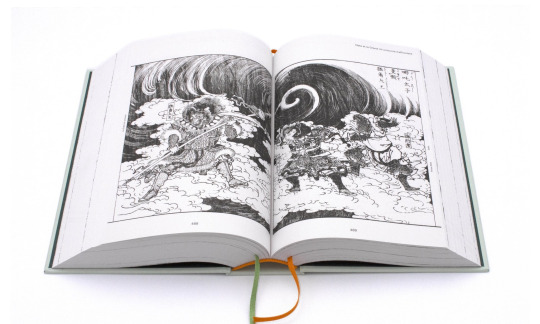

#journey to the west#jttw#sun wukong#monkey king#translation#Japan#japanese prints#japanese woodblock print#french#Lego Monkie Kid#LMK#Japanese art#Asian art#woodblock print
39 notes
·
View notes
Text

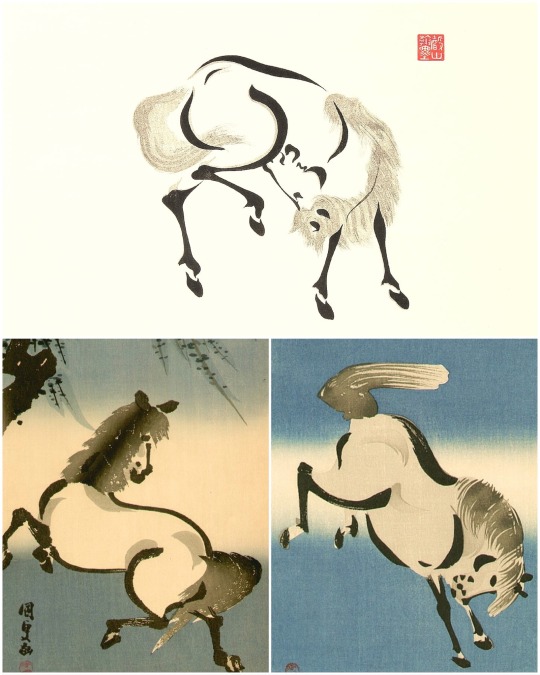
Aoyama Seizan, Horses, 1930s
#Aoyama Seizan#horses#woodcut#japanese prints#woodblock print#equestrian#horseback riding#asian art#aesthetic#asian aesthetic#japanese aesthetic#modern art#art history#aesthetictumblr#tumblraesthetic#tumblrpic#tumblrpictures#tumblr art#tumblrstyle#japanese art#beautiful animals#wildlife#nature#beautiful horse
3K notes
·
View notes
Photo

Koki Tsujimoto — Auspicious Rainbow Dragon: Kou Kou (mineral pigments on japanese paper mounted on wood panel, 2019)
5K notes
·
View notes
Photo

Kawanabe Kyōsai 河鍋暁斎 (Japanese, 1831–1889)
Kyōsai Sketchbook (Kyōsai manga) 暁斎漫画
Meiji period (1868–1912)
1881 (Meiji 14)
#kawanabe kyōsai#kawanabe kyosai#kyosai kawanabe#japanese art#woodblock print#ukiyoe#japan#woodcut#japanese prints#printmaking#skeleton#skeletons
2K notes
·
View notes
Photo


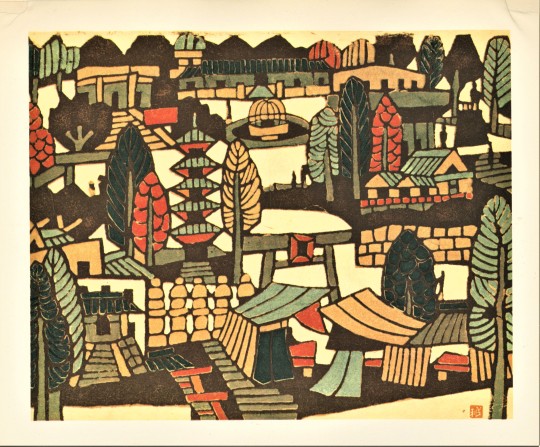


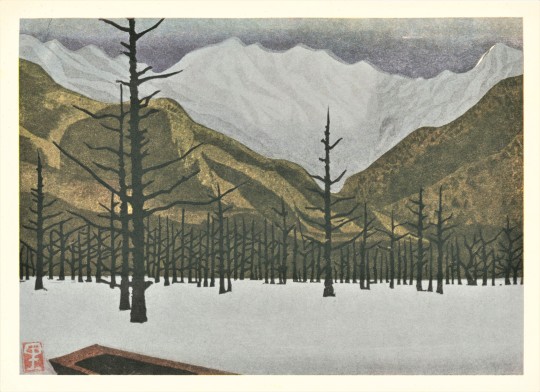



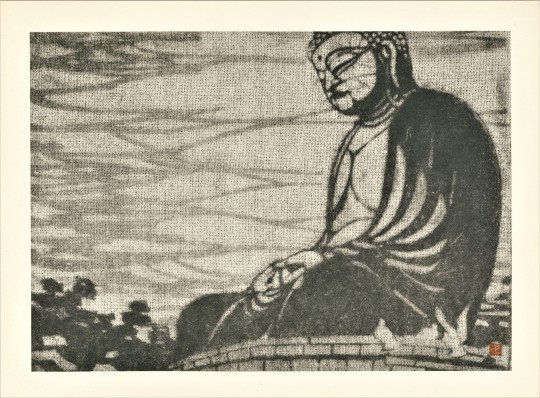
Wood Engraving Wednesday
So, this week we’re replacing our usual wood engravings with color woodcuts instead because we wanted to show off some of the exquisite original wood block prints from a 2-volume set of contemporary Japanese woodcuts. The volumes have not been cataloged yet because the title and publication information are in Japanese and we have not had them translated yet. The title (we believe) is on the cover of the book, which we show here.
The two volumes contain 24 original prints by different artists showcasing traditional techniques with modern sensibilities. Each print is stored in a page composed of a polyethylene sleeve that the print can be removed from. Please click or tap on the images for title and artist information.
View more posts with Japanese prints.
#Japanese prints#wood block prints#color woodcuts#woodcuts#Asian American and Pacific Islander Heritage Month#AAPI Heritage Month#Japan#Japanese#Wood Engraving Wednesday
135 notes
·
View notes
Text
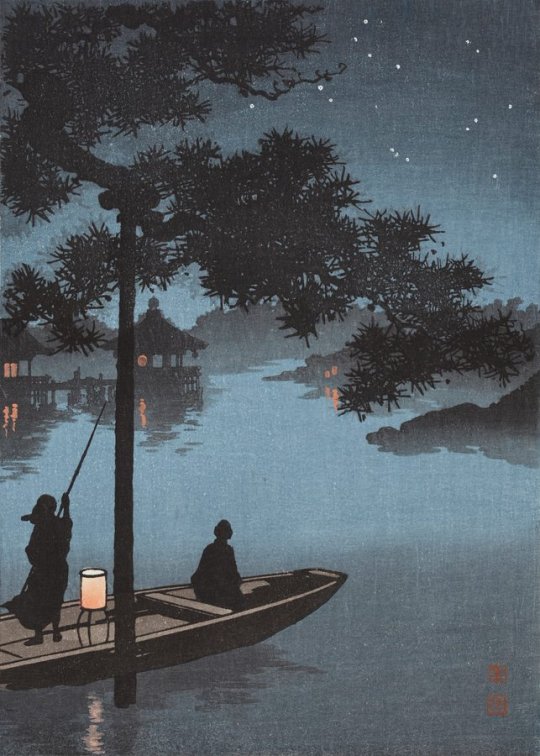
Stars over Biwa Lake, by Shoda Koho, 1930
321 notes
·
View notes